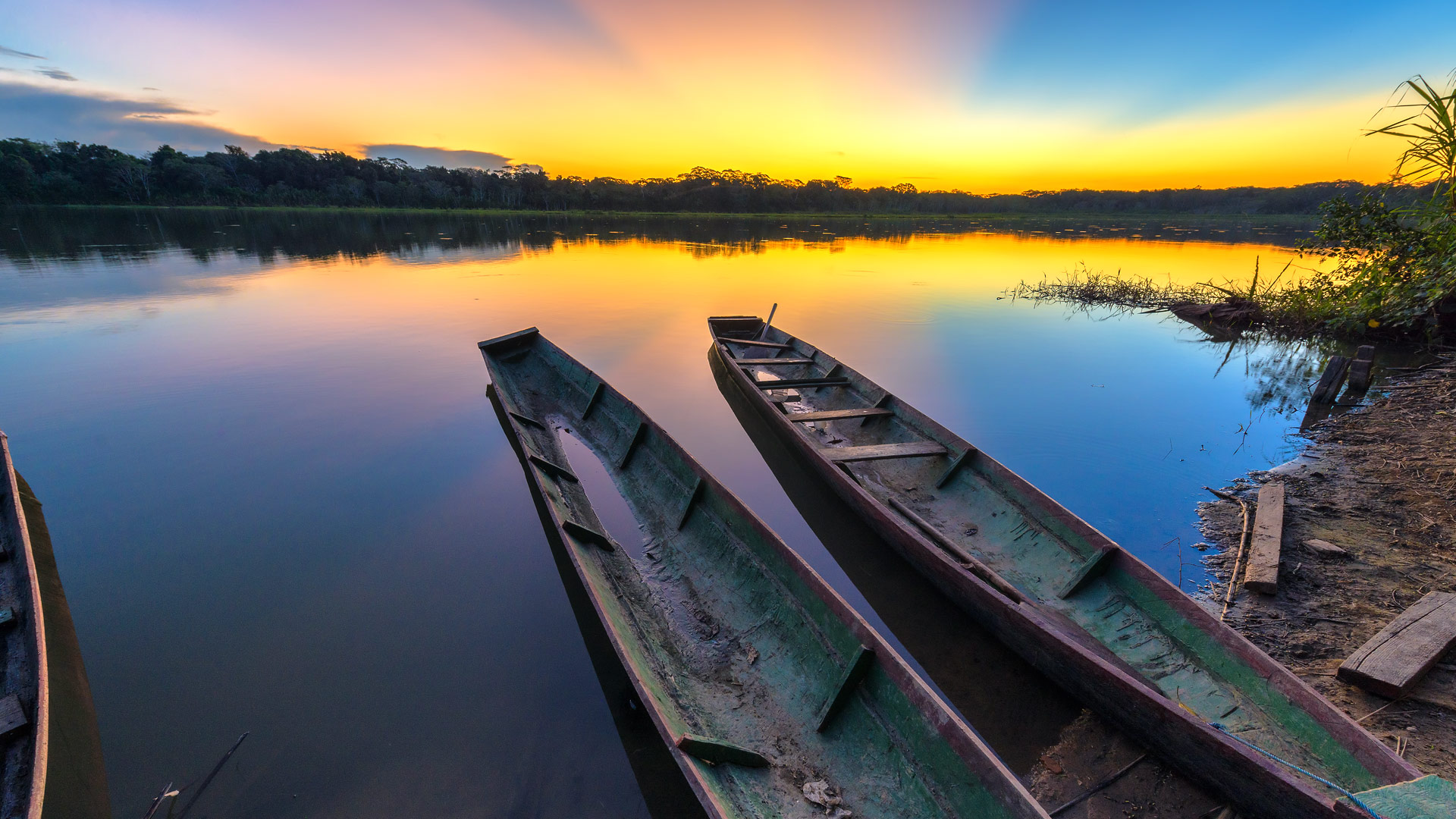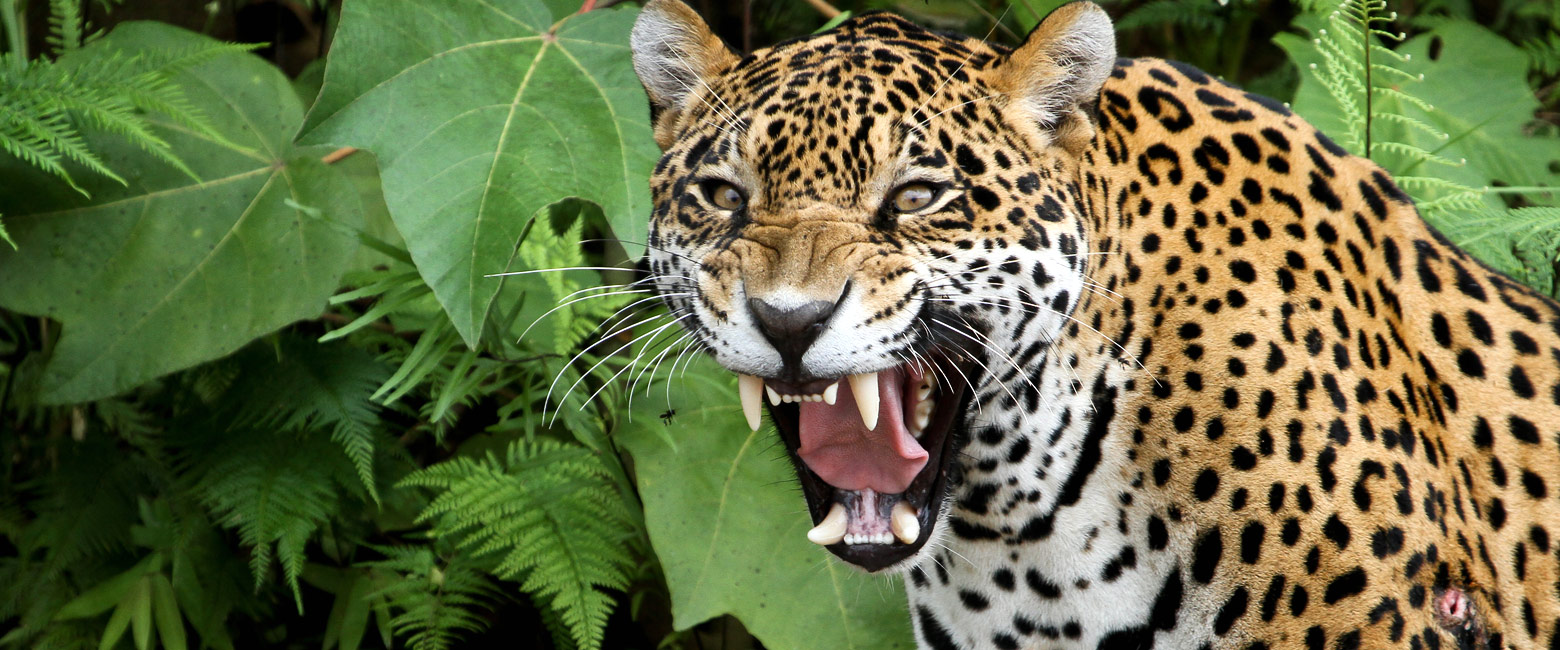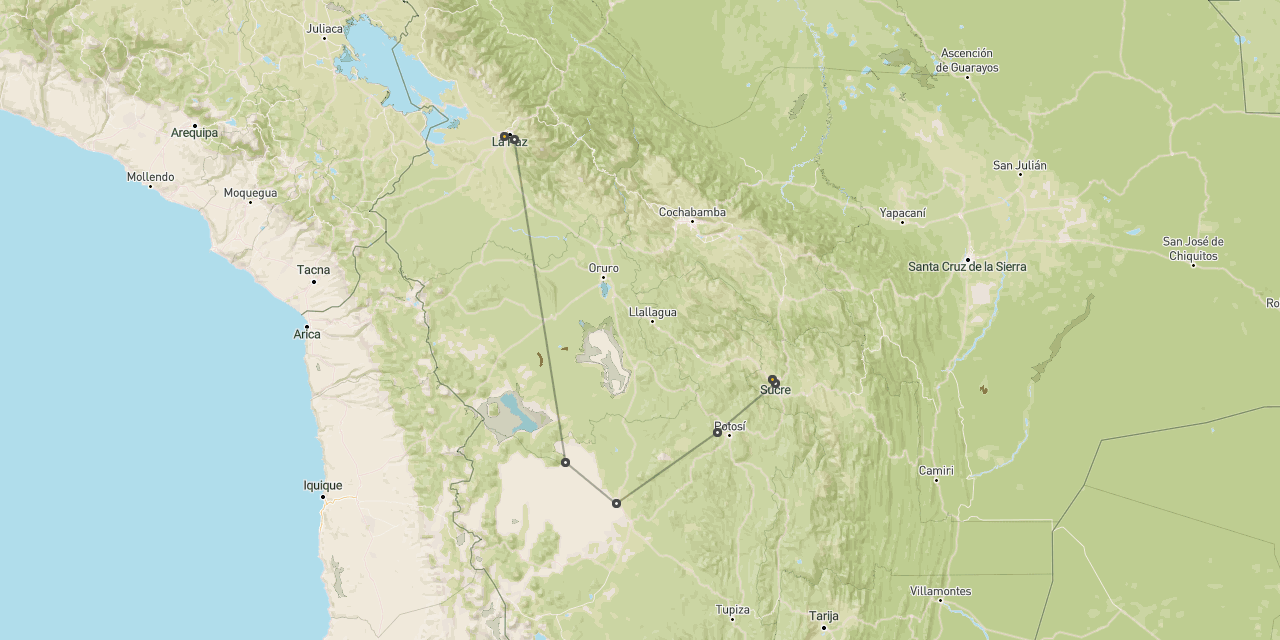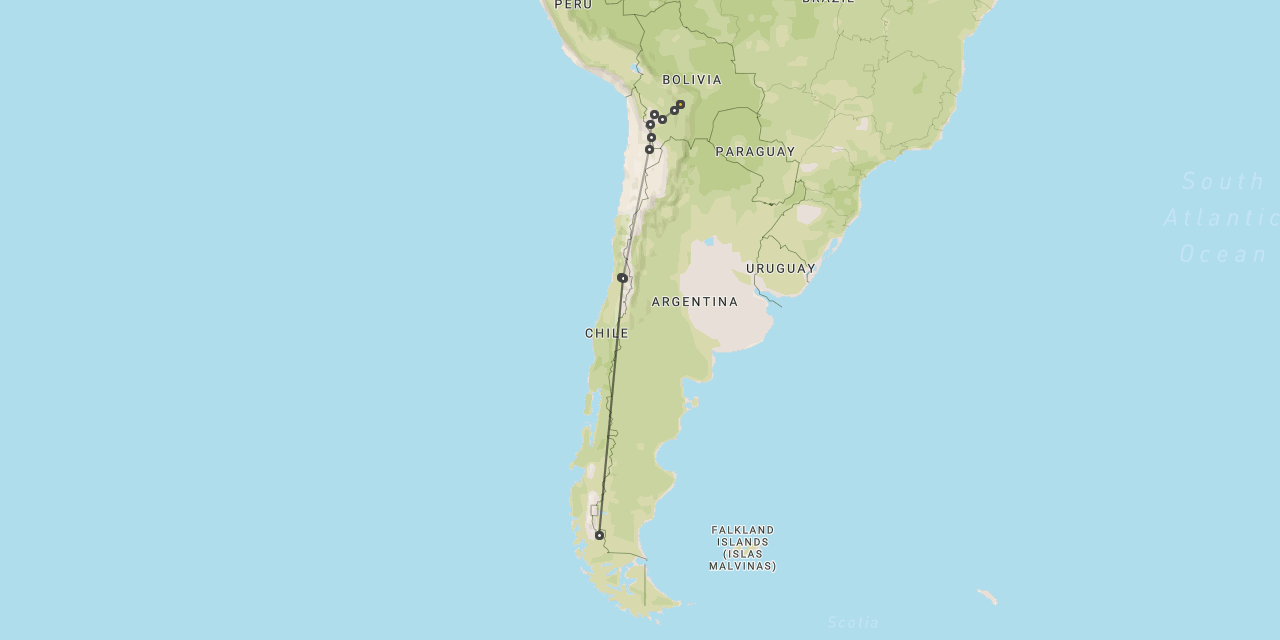
Safari to Madidi
Madidi
is a large rainforest reserve
in the Bolivian Amazon

the heart of an absolutely massive conservation area
Madidi is the name that we use to describe the section of the Amazon Basin which lies up against the Andes Mountains in northwest Bolivia.
This fabulous reserve forms part of what is one of the largest conservation areas in the world.
Madidi has the greatest biodiversity of any national park worldwide, with ecosystems ranging from the glaciers of the high Andes, all the way down to the rainforests of the Amazon Basin.
The most visited parts of this remote are comprised of tropical rainforest, where the wildlife includes a number of visible monkey species, as well as much more elusive pumas, jaguars, peccaries and tapirs. There’s also 1254 species of birds, which represents an incredible 14% of the worldwide total.
The area is accessed by air from La Paz to the remote outpost of Rurrenabaque, from where the rainforest areas are accessed by motorboat and the pampas savanna areas are reached by road.
All of the lodges that can be reached this way are relatively simple, most being operated in partnership with the native tribespeople. The wildlife viewing is universally challenging, but the overall experience provides a great contrast to the high altitude regions of Bolivia.
Surprisingly, the best lodge in Madidi National Park by a distance is the Heath River Wildlife Center, which is located in the far north and is actually accessed from the Peruvian side.
That Tambopata area in Peru, unlike Madidi, also contains some high-end lodges, if that is what you are looking for.
If you are looking for a luxury cruise on the upper Amazon River, then you need to head to the Iquitos area in the northeast of Peru.

Gallery
Map
The best time to visit Madidi is generally considered to be the Apr-Oct dry season.
Although this area is dominated by tropical rainforest (which is usually indicative of a pretty stable year round climate), Madidi actually experiences quite a considerable seasonal range.
In this section we describe the climate in the tropical forest areas. Higher up the mountain slopes the conditions are considerably cooler and the rainfall lower.
Temperatures are quite stable year round, with peak daytime temperatures typically rising to around 31C/88F (peaking around 37C/98F), with nighttime temperatures dropping to 17C/63F. Given the high year round humidities, these night conditions can be quite sticky and uncomfortable (yet air conditioning is notable by its absence). During the Nov-Mar rainy season those nighttime temperatures can be a few degrees higher, which doesn’t help.
If you don’t enjoy high temperatures, then Jun-Jul is the best bet, since southerly winds can bring in slightly cooler fronts.
But the biggest seasonal difference is rainfall. During the Nov-Mar rainy season the precipitation rises to around 300mm/6” per month, which is pretty high.
Downpours can be torrential and enduring. Whilst there’s still a lot of sunny weather around, it is possible to have consecutive days of overcast weather.
During the converse dry season rainfall drops to around 75mm/3” per month, which means there are still regular showers, but they tend to be light and intermittent, with sunny weather prevailing.
Getting there
The Madidi area can be easily accessed by internal flights from La Paz to the small riverside town of Rurrenabaque.
From there the rainforest areas are accessed by motorboat, first heading south along the main Beni River for around 20 km (passing through the Bala Canyon), then turning west up the smaller Tuichi River. Depending on which lodge you are heading to, this river journey takes 3-8 hours. To get to some lodges you also need to hike through the forest.
Returning by river to Rurrenabaque, to get to the pampas areas it’s necessary to drive northeast for about 2 hours, to reach the lodges of the Santa Rosa area.
Where to stay
Given the top billing that the Madidi area gets in terms of the size of the conservation area, the range of habitats and the incredible biodiversity, it comes as an enormous disappointment to discover quite how poor are the lodges in the area.
The best of the bunch is definitely Chalalan EcoLodge, but even staying there you need to be pretty rugged and ready for some rudimentary facilities, as well as some potentially pretty weak wildlife viewing.
But all is not lost. The reserve does have one really strong option, namely Heath River Wildlife Center. However this lodge is located in the extreme northwest corner of the reserve and is accessed from the Peru side. It is therefore listed under the Tambopata area (the reserve on the other side of the border), which is accessed by air from either Lima or Cuzco rather than La Paz.
That Tambopata area, unlike Madidi, also contains some high-end lodges, so it might be worth heading over there if that’s what you’re looking for.
If you are looking for a luxury cruise on the upper Amazon River, then you need to head to the Iquitos area in the northeast of Peru.
less appealing than other Amazon areas
let us know your thoughts about Bolivia
and we will help you create the perfect trip

Extraordinary tailor-made adventures,
from earthy and edgy to easy and extravagant
From around USD 2500 per person, you set the ceiling
Sample Trips
Here are some of our popular trip shapes

Get started on your trip
It’s never too soon to get in touch, we are here to help with every stage of your planning.
Best Lodges
We regularly inspect and photograph all of the the best lodges, to ensure that we always recommend the most suitable options
Key Locations
Take a look around related locations. Click ‘View more’ to explore locations further afield.
Where Next?
Where Next?
We offer trips to dozens of fabulous countries.
Might one of these might be your next great adventure?

Please rotate your screen.

































